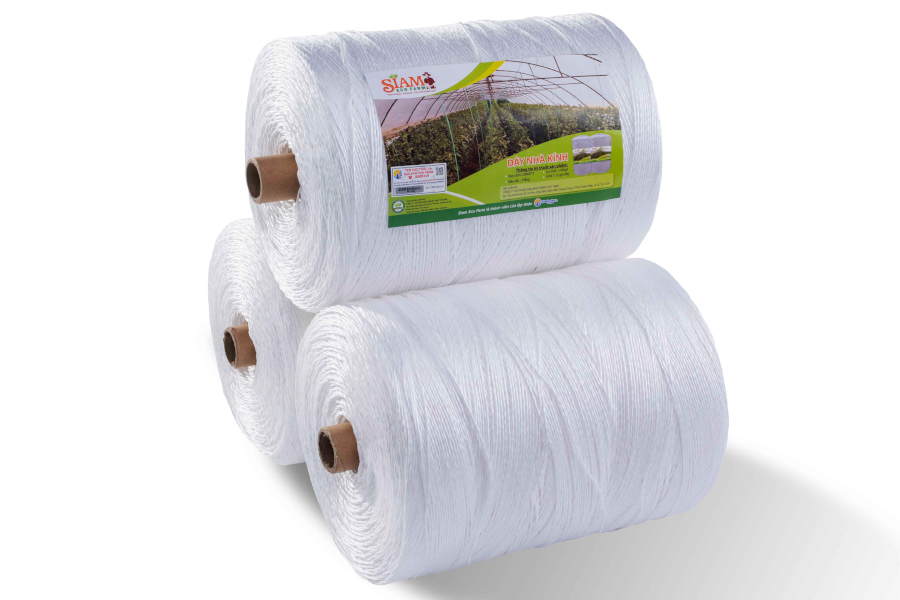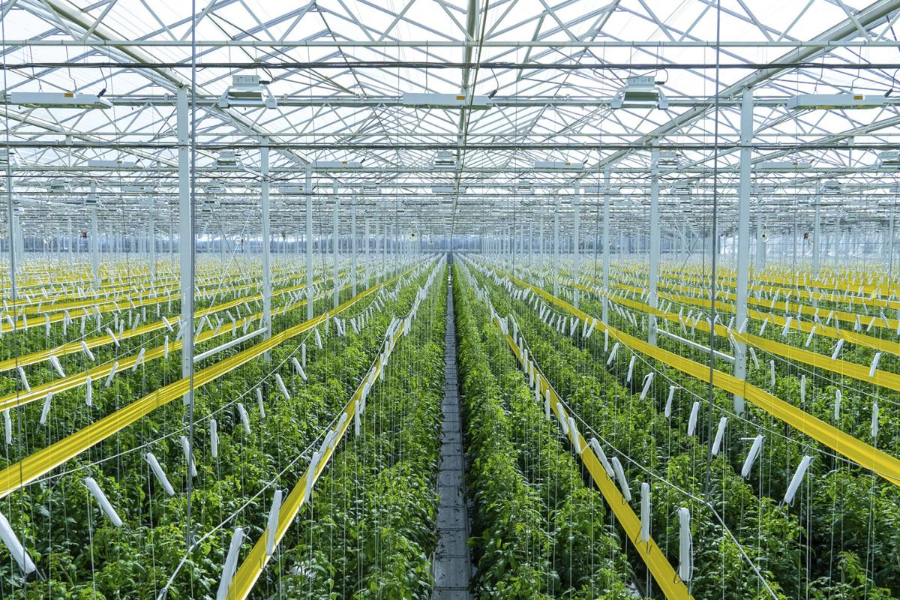Greenhouse twine, also known as agricultural twine, is a type of hanging wire used in agriculture, especially in greenhouse, polytunnel, and net house cultivation. Agricultural twine is typically made from polypropylene (PP) or polyethylene (PE) materials. It is a widely used product among farmers in crop cultivation. Greenhouse twine is a specific type of agricultural twine tailored for greenhouse models, possessing characteristics suitable for greenhouse environments. In this article, let's delve into what greenhouse twine is, its purposes, usage instructions, and guidelines for selecting and purchasing greenhouse fiber to ensure high-efficiency crop cultivation while minimizing costs.
Product description of greenhouse twine
Uses of greenhouse twine
Instructions for using greenhouse twine
Consulting on purchasing greenhouse twine products
Details of each content
The Greenhouse twine - Agricultural twine is made primarily from 100% virgin PP (Polypropylene) plastic, which is environmentally friendly. The greenhouse fiber is constructed by twisting individual strands into a single twine, with thin mesh layers inside.
Color: It comes in white, which is the natural color of the PP or PE plastic pellets without dye. Additionally, it can be dyed in various colors upon customer request to match the aesthetic of the greenhouse, polytunnel, or net house. In addition to agricultural applications, some businesses use greenhouses for visitor attractions, so matching the color of the twine with the greenhouse structure is an important consideration for customers.

Greenhouse twine - agricultural twine is applied to support agricultural activities within greenhouses, polytunnels, and net houses. Agricultural cultivation offers numerous benefits: it promotes better and more uniform plant growth, reduces the risk of pest infestation, and enhances productivity and output quality of crops.
Some specific uses of greenhouse twine - agricultural twine include:
Hanging Vine Plants: Through the use of hanging hooks, greenhouse twine is employed to suspend various types of vine fruits. This method prevents direct contact between the fruits and the ground, thus reducing the risk of soil-borne pests and diseases. Additionally, it helps prevent fruit deformities caused by ground contact.
Wrapping Plant Stems: For vine plants requiring support structures to grow upwards towards sunlight, greenhouse twine serves as an alternative to erect support poles. Unlike poles, which consume considerable space within the greenhouse, greenhouse twine allows vine plants to wrap and climb vertically while occupying minimal space. This optimization enables farmers to maximize planting area and increase harvest yields.
Creating Trellises: Greenhouse twine is utilized to construct trellises for vine plants bearing smaller fruits. Trellises provide support for smaller fruits without exerting excessive pressure. Some vine plants suitable for trellising with greenhouse twine include passion fruits, tomatoes, etc. Depending on the greenhouse model and specific needs, farmers can construct various types of trellises, such as A-frame trellises, horizontal trellises, etc. (For details on some types of climbing trellises and how to build them, you can refer to the article "Instructions for designing a simple, super beautiful climbing trellis")."
Depending on the greenhouse model and the type of crops being cultivated, farmers can employ various methods of using greenhouse twine - agricultural twine (for detailed information on some common greenhouse models and how to use greenhouse twine to support these models, refer to the article "5 Common Greenhouse Models and How to Use Greenhouse twine to Support Them").
Here are some ways to use greenhouse twine - agricultural twine:
Using with Hanging Hooks: Utilize greenhouse twine in combination with hanging hooks to suspend fruits or vine stems of plants.
Hanging from Above: Use downward-hanging twine to tie them securely to the top of the structure, allowing vine stems to wrap around them as they grow upwards.
Creating Trellises: Stretch greenhouse twine out to form trellises for vine plants to climb onto. Ensure that the knots are tied securely.

Choosing the right greenhouse twine - agricultural twine product that is both effective and cost-saving is essential. Currently, there are numerous manufacturers and traders offering various types of agricultural twine products in the market, including greenhouse twine. However, the number of manufacturers producing standard fibers is limited due to the production process requiring modern technology equipment and testing machines to ensure the highest quality standards. To ensure the purchase of a quality product that can be used across multiple planting seasons without the risk of breakage or damage, and without the need for frequent replacements, farmers operating greenhouse systems should select large-scale manufacturers with quality and environmental certifications to ensure the best product quality.
Siam Brothers Vietnam is a company with nearly 30 years of experience in Vietnam, specializing in manufacturing ropes for various industries including fisheries, maritime transport, and agricultural products such as greenhouse twine, cucumber hanging ropes, trellis ropes, hay baler twine, banana tree twine, etc. All greenhouse twine - agricultural twine products manufactured by Siam Brothers Vietnam meet quality standards under ISO 9001 and ISO 14001 certifications. Additionally, their production system complies with environmental standards and safety certifications.
The greenhouse twine - agricultural twine products manufactured by Siam Brothers Vietnam have the following outstanding advantages:
In addition to producing high-quality products, Siam Brothers Vietnam offers various incentive programs for farmers to purchase quality products while saving costs. These include:
Farmers interested in exploring the greenhouse twine - agricultural twine products manufactured by Siam Brothers Vietnam can contact the company through the following channels: